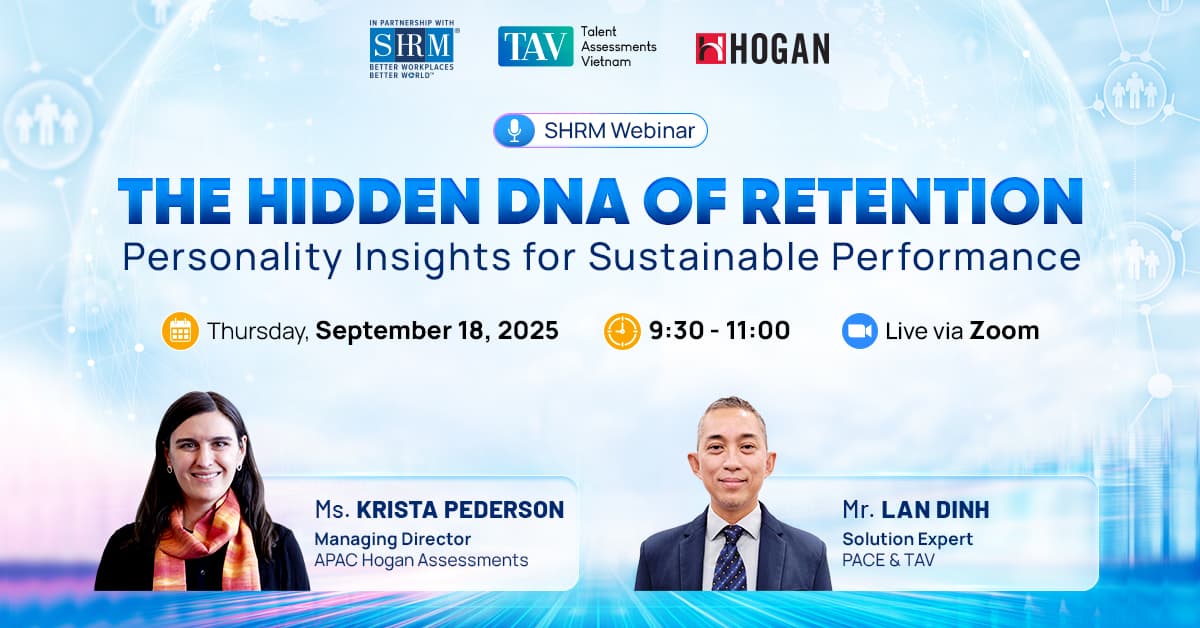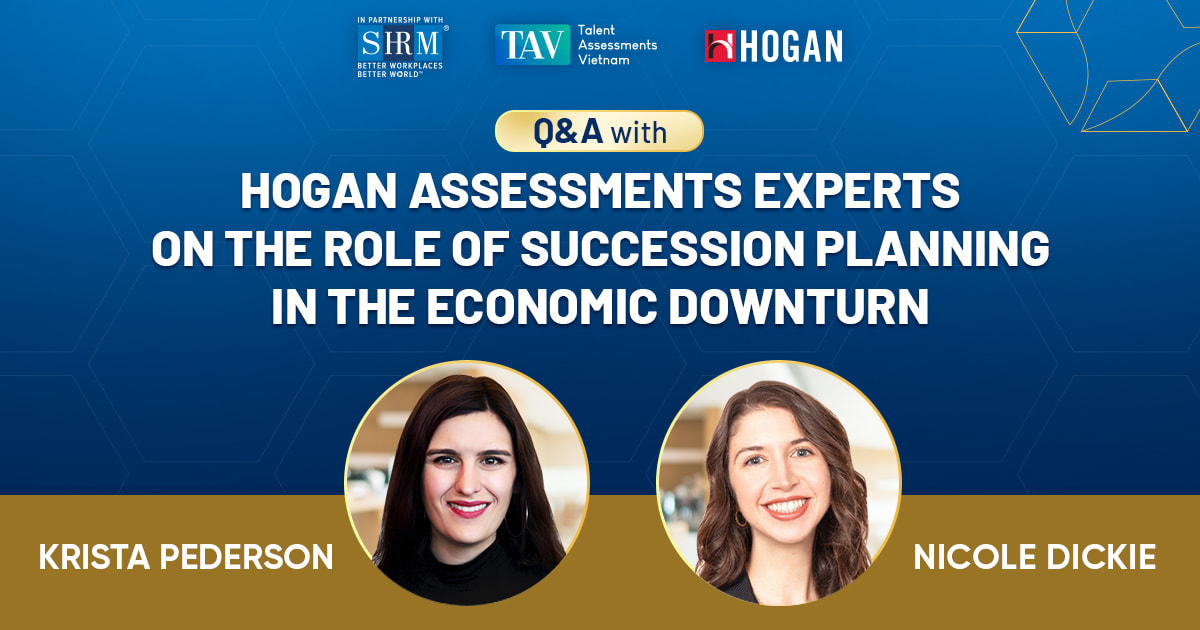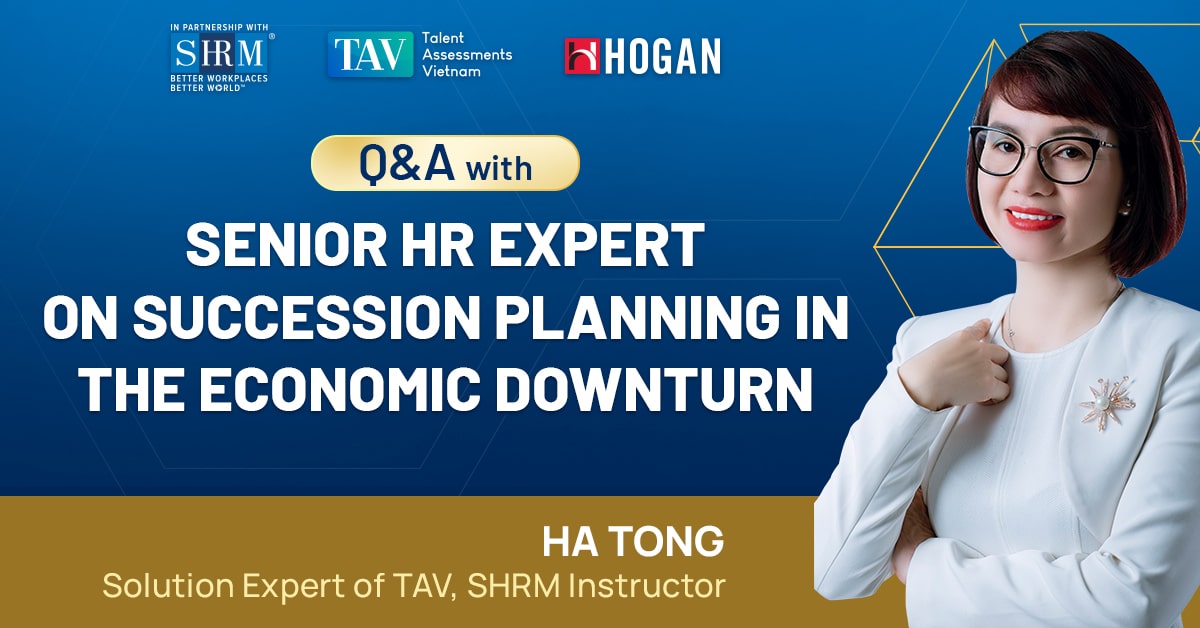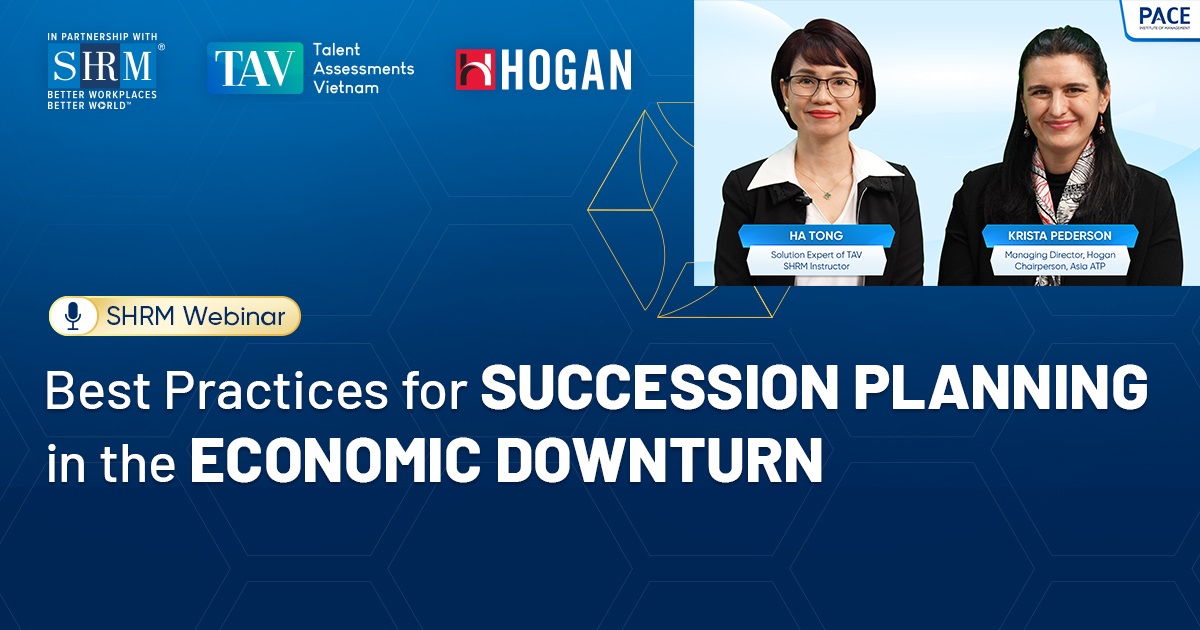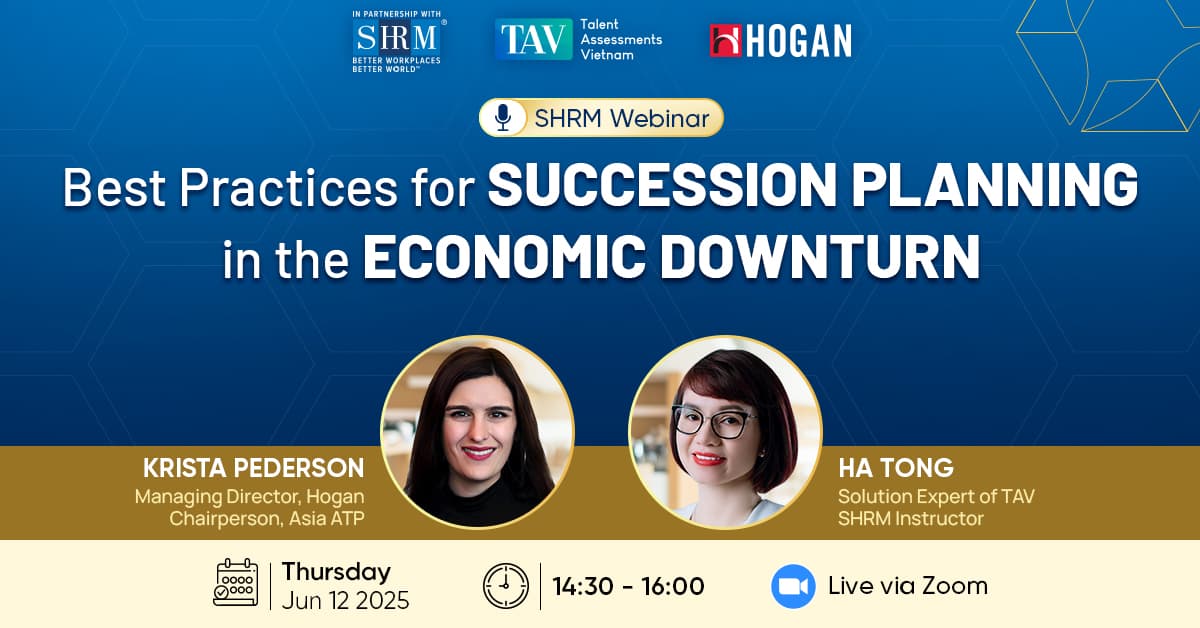Q&A WITH SENIOR HR EXPERT ON SUCCESSION PLANNING IN THE ECONOMIC DOWNTURN
As part of the seminar “Best Practices for Succession Planning in the Economic Downturn” participating HR and L&D professionals had the opportunity to engage with Ms. Ha Tong, Solution Expert of TAV, SHRM instructor. Together, they explored effective and adaptive people strategies amid volatility. Below is a summary of key Q&A highlights, followed by expert insights addressing pressing challenges faced by organizations:
Q: In a business environment marked by growth constraints and evolving talent strategies, when do you recommend a company prioritize internal development versus external recruitment?
Ms. Ha Tong: The choice between Build (internal development) and Buy (external recruitment) should align with the company’s overall strategy. If your organization is pursuing breakthrough growth, market expansion, or requires specialized competencies not yet present in-house, hiring externally is appropriate. Conversely, when there is potential to cultivate successors internally—especially for roles with clear successor profiles—internal development offers more sustainable benefits. I often advocate for a holistic and flexible approach using the “4Bs” talent management model: Build – Buy – Borrow – Bridge.
Q: With high levels of workforce turnover and shifting responsibilities, how should succession planning be implemented optimally?
Ms. Ha Tong: In volatile situations, succession planning should focus on roles that meet the following criteria:
+ A stable business strategy
+ A well-defined success profile for successors
+ An established organizational system and culture
For roles that do not yet meet these conditions, adopt alternative strategies such as Borrow (external secondment), Buy (recruitment), or Bridge (transitional development) to remain agile.
Q: What key criteria should be used to assess the potential of a successor candidate?
Ms. Ha Tong: I evaluate three core factors:
1. Development aspiration – Does the individual genuinely want to step into a leadership role?
2. Agile learning ability – In a fast-changing world, only those who learn rapidly and translate knowledge into action can keep pace.
3. Organizational commitment – Do they demonstrate long-term dedication and a genuine desire to contribute?
These cannot be judged solely by current performance. They require behavioral observation, direct dialogue, and well-designed assessment tools.
Q: It’s said that fast-growing companies often lack time for succession planning. What’s your view?
Ms. Ha Tong: That is a common reality and a hidden risk. The most effective organizations handle short-term objectives without neglecting long-term vision. Postponing succession until there’s “time” is a strategic mistake. If a vacancy arises and no one is prepared, the organization faces operational and cultural risk.
Q: Should the development approach differ between high-potential (HIPO) individuals and those who are both high-potential and high-performing?
Ms. Ha Tong: This relates to the 9-box talent matrix. For individuals who score high in both potential and performance, focus on deep, targeted development with clear succession trajectories. For those with high potential but lower current performance, development efforts should emphasize long-term growth, motivation, and unlocking their potential.
Q: How can organizations communicate succession plans effectively while maintaining fairness for both selected and non-selected employees?
Ms. Ha Tong: Communication style should fit organizational culture. However, the modern trend is transparency and personalization. For the HIPO group, clearly explain why they were chosen and commit to supporting their development. For those not selected, emphasize that the decision is not due to lack of ability but rather a current misalignment with strategic priorities. Provide clarity on what they need to develop for future consideration.
Q: What if there’s a trained successor but no position currently available? How should the organization retain them?
Ms. Ha Tong: Avoid having them remain idle. Assign strategic short-term projects, delegate decision-making authority in specific areas, or provide financial and psychological support for ongoing development. Encourage them to prepare for multiple future roles rather than waiting for a single vacancy.
Q: Which positions should be prioritized in succession planning?
Ms. Ha Tong: Generally from Assistant Manager level and above, though there is no rigid rule. What matters most is alignment and commitment from senior leadership. HR professionals should proactively propose succession strategies and demonstrate their value to the organization’s development.
SUCCESSION PLANNING AS A COMMITMENT TO THE FUTURE
Succession planning is not a short-term fix; it is a long-term strategy that requires intentional preparation for inevitable market transitions. Even starting modestly—whether it’s a preliminary list, an experimental development path, or an open conversation—is far better than waiting until a role is vacant and no one is equipped to fill it.
From these expert, real-world insights, we see that successful organizations share a key trait—not in expensive tools or complex frameworks, but in their seriousness in asking: “Who are we preparing? And what support do they need to be successful in their future role?”
Leadership does not begin with a title, and succession should not begin with a crisis. Whether it’s an initial shortlist, a pilot development plan, or an honest conversation—starting today is always better than waiting until a critical moment arrives and no one is ready.
